Construction
The Douglas C-47A was by far the most numerous of the DC-3 / C-47 series of aircraft produced, with 4931 built. It featured several major improvements in the cockpit over the original DC-3 / C-47 including the following;
- A 24 volt electrical system, replacing the original 12v system
- Hot air heat system (replacing the original steam system)
- Glide path indicator
As the production run continued, C-47A’s were further fitted with the following;
- 1 switch ignition
- Demand oxygen system (replacing the earlier high pressure system)
- Remote indicating compass
As well as these major items, numerous minor equipment & layout modifications took place (e.g. different instrument panel layouts, lamps, etc.). These changes were bought about as a result of operational experience, technical advances & production streamlining.
The vast majority of wartime C-47’s were produced in 2 plants, Long Beach, California & Oklahoma City, Oklahoma (early DC-3’s & C-47’s were produced at Santa Monica, but this plant moved on to the production of other types). The origin of an individual aircraft can be determined by the final two letters of its type specification, “DL” for Long Beach, “DK” for Oklahoma City. Aircraft were produced in production “blocks”, each numbering several hundred aircraft. The aircraft in each block would have been produced to the same specification & incorporated the then current equipment fit.
Each aircraft was allocated a unique constructors number. In the case of this aircraft, it was 10100. It was purchased under Air Corps order number AC-20669 at a cost of $109,683 and given the AAF serial number 42-24238.
10100 was constructed at the Long Beach plant, at the time one of the largest covered buildings in the world. It had been erected in 1941 to cope with the huge expansion in orders which Douglas had received, both from the US & overseas. The factory was in use until 2003, after which most of it was demolished. This 2005 photo shows the surviving airfield, with the factory “footprint” visible in the bottom right hand corner.

10100 was a C-47A-50-DL (the “50” indicated the block number) & was just short of the 2000th C-47 produced at the Long Beach plant. It incorporated some, but by no means all, of the modifications subsequently seen on the C-47A. By the time it was being manufactured, a large proportion of the factory work force were female. This is very obvious in the following series of colour photos taken during C-47 manufacture at the plant.
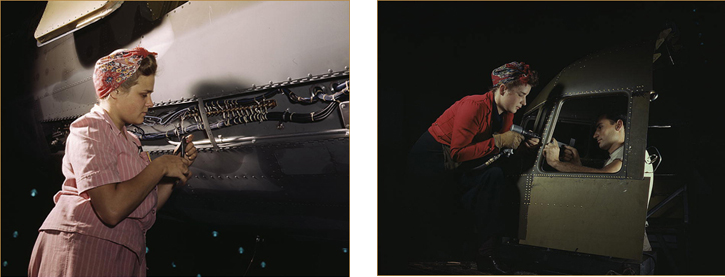

It was completed in August 1943 & was test flown twice by company staff prior to two further test flights by military test pilots. Any discrepancies were corrected before formal delivery took place on the 23rd August 1943.
Upon delivery, the aircraft was taxied around the airfield to the Air Transport Command base at Long Beach Army Airfield for onward flight to its next destination. It is unclear whether 10100 went through the modification centre at Daggett (as may RAF Dakotas did) or moved on directly to Mobile Army Air Field, Alabama, ready for the Atlantic crossing. Whichever route it took, 10100 was in the UK by the following month & was received in theatre by Scottish Aviation in Prestwick.
RAF Service
10100 was given its RAF serial number FL517 & was prepared for allocation to its first operational unit. It was now known as a Dakota 111 (Dakota 1’s being the original C-47, Dakota 11 the C-53 Skytrooper with smaller troop door).
Having been received by Scottish Aviation & prepared for Squadron service, 10100 (now bearing the serial FL517) was allocated to 512 Squadron at RAF Hendon on 11th September 1943. It’s time on the squadron was brief, as it was reallocated to 511 Squadron on the 16th September.
 511 Squadron was part of 44 Group, Transport Command & operated from RAF Lyneham in Wiltshire. FL517 was amongst the first Dakotas they received & joined a mixed fleet including Liberators & Albemarle’s. As well as internal routes, the Squadron operated as far afield as the Azores, North Africa & the Far East.
511 Squadron was part of 44 Group, Transport Command & operated from RAF Lyneham in Wiltshire. FL517 was amongst the first Dakotas they received & joined a mixed fleet including Liberators & Albemarle’s. As well as internal routes, the Squadron operated as far afield as the Azores, North Africa & the Far East.
The squadron’s Dakotas normally flew with a crew of 4, two pilots, a navigator & a wireless operator / loadmaster. A check of the Squadron Operational Record Book during this period reveals that many of the aircrew were very experienced individuals, with DFC’s & DFM’s fairly prevalent. This suggests that they had probably completed operational tours in other Commands before being posted to 511.
FL517’s first task for 511 Squadron commenced on the 16th September with a crew of 4 under Sqn Ldr D.C Pascall DFC. Taking off from Lyneham they flew to Hendon & collected their load of 1794lbs of freight & 9 passengers. From there they proceeded to Portreath & then on to Gibraltar, arriving late that evening. The following day saw them moving on to Maison Blanche (Algeria) with an increased freight load & after an overnight stop, heading back to Rabat Sale in Morocco before the short flight on to Gibraltar. The aircraft finally arrived back at Lyneham on the 19th.
This pattern of flights, moving ever eastwards into the middle & Far East was FL517’s lot for the next nine months.

FL517 flew for 511 for the last time on the 6th August 1944 when it returned to Lyneham. The Squadron was focussing on long range routes using Avro Yorks, so the Dakotas were passed on to 525 Squadron, also based at Lyneham.
525 was another Transport Command Squadron and at this time they were engaged in hauling freight to the allied armies in liberated France & subsequently Belgium. In time, they also added routes to the Middle East to their schedule. The Squadrons aircrew were mostly Canadian, with a scattering of other allied nationalities amongst them. The Squadron remained at RAF Lyneham until July 1945, when they moved to RAF Membury in Berkshire.

By this time, FL517 would have been fairly old by RAF Dakota standards, so it is no surprise to find that by November 1945 she was on the inventory of 1381(T) Conversion Unit at RAF Bramcote in Warwickshire.
On 19th March 1946, FL517 appears to have been involved in an accident, as it is recorded as requiring a Category B repair (beyond repair on site, but repairable at a Maintenance Unit or at a contractor’s works). On 9th April 1946, it is recorded as being at Airworks & General Trading Co Ltd at Gatwick & it was still there in May.

By 1st October 1946, FL517 had moved to 33MU, once again at RAF Lyneham. Its stay was brief, as on 27th November it was sold to Scottish Aviation.
Westminster Airways
Scottish Aviation, the company which had initially received 10100 from the USAAF in 1943, bought the aircraft on the 27th November 1946. They prepared the airframe for civil service (their plaque can be found on the pilots side cockpit bulkhead on many surviving C-47’s) by removing any unnecessary military equipment, overhauling the remaining assemblies and carrying out conversion work to bring it up to airline standard.
On 13th January 1947, the aircraft was sold to the recently formed Westminster Airways & registered as G-AJAZ, the first of its many civil registrations.

The airline was formed by a group of MPs lead by Air Commodore A.V. Harvey, former Officer Commanding 615 (County of Surrey) Squadron & 10 Group Fighter Command. The company went on to obtain a total of four C-47’s, 10100 & 13375 (ex-RAF KG616), 12358 (ex-RAF KG351) & 25799 (ex-RAF KJ860) to supplement their fleet of Airspeed Consuls (& later ex-RAF Halifax’s).
G-AJAZ was personally selected by the airlines Chief pilot, Capt. Brian Powell (a recently demobilised wartime RAF pilot). He supervised the overhaul of the aircraft & together with Capt. Ellison, took it on its first flight for the airline on 26th April 1947 (a short familiarisation flight in the local area). Further familiarisation & training flights were conducted before the aircraft was moved south the airlines operating base at Blackbushe (the former RAF Hartford Bridge) on the 29th April.

By June, the G-AJAZ was operating a charter service between the UK & South Africa. The 4 ½ day route departed from Croydon and went via Rome, Athens , Fayid ,Khartoum, Nairobi, Tabora, Noola, Bulawayo, Germiston & finally Wanderboom. In the days before navigation aids in this part of the world, navigation was conducted by dead reckoning accompanied by a huge pre-prepared strip map of the route. The flights were conducted at 10 000’.
The summer of 1947 was taken up with the South African charters & additional flights between Croydon and Nice, Deauville & Zurich.
September 1947 saw the political situation deteriorate in the newly separated Indian sub-continent. G-AJAZ was despatched to India to assist with the British Government organised operation to moved displaced persons between India & the newly created Pakistan & vice versa. This was to be the largest air evacuation ever attempted & over 41,500 persons were eventually moved by air.
The operation was organised by Air Commodore H G Brackey & involved aircraft from BOAC & seven other charter companies. Westminster Airways contributed 2 Dakotas & they operated from Palam (Dehli) to airstrips throughout the country. Many of these were former RAF bases, but some were more basic grass strips & included Peshawar, Risalpur, Rawlpindi, Chakwal, Multan, Sargodha, Di Khan, Quetta, Lyallpur, Khanpur, Amritsar, Ambala & Lahore.
The crews had a long day & operations began at sunrise. Crews were responsible for selecting the best positions at the designated airfields to park & load their passengers. Sometimes the scenes they were greeted with were chaotic & order was barely maintained. The flying continued until sunset, with the aircraft returning to Palam in darkness.
The loads carried during these operations were immense. On one occasion, a Westminster Airways Dakota flew with no less than 69 persons on board. The airlines two aircraft flew 94,623 miles during 650 flying hours on this operation & hauled 4363 passengers & 220000lb of baggage.
The operation was completed by the 30th November & G-AJAZ returned to Europe & more mundane tasks.
Spring 1948 saw G-AJAZ flying charters to Zurich and Geneva as well as the established route to South Africa.
The 9th May 1948 saw G-AJAZ fly a notable passenger from Northolt to Nice – none other than Winston Churchill (accompanied by Lord Beaverbrook). This entry in Brian Powell’s log book records the event:

Another unusual flight took place on the 9th June when the aircraft carried the Halle Orchestra to Vienna.
Political tensions in Europe came to a head in the autumn of that year when the Soviets blockaded Berlin. Once again, the British Government enlisted the aid of the small charter airlines to assist with the RAF contribution to the airlift. G-AJAZ was based at RAF Schleswigland & flew a 7,480lb payload into Gatow & Tegel airfields no less than 184 times (accumulating 527.55 flying hours in the process). Westminster Airways pilot Capt. Laurie Nutton recalled,
“Although we started by carrying coal, the loads varied, most of them being foodstuffs such as dehydrated potato. The dirtiest cargo from our point of view was soya flour. A fine powder settled everywhere, especially it seemed… on our uniforms.”

These were not unchallenged flights & G-AJAZ featured in an October 1948 article in Flight magazine when it was formated upon by 4 soviet Yak fighters, one of which closed in until it was no more than a couple of aircraft lengths away.
The company halted operations at the end of 1949 when the board of directors decided to cease flying due to the restrictions imposed on air charter companies by government legislation & 10100 was once again for sale. On 3rd December 1948, its registration was cancelled & it was moved to Spain to begin more than a quarter of a century in Spanish skies.
Iberia
In December 1948, Iberia (the national airline of Spain) purchased 10100 & registered it as EC-ADR. It proved to be a long term asset for them & it was not until December 1965 that they finally retired it from service.
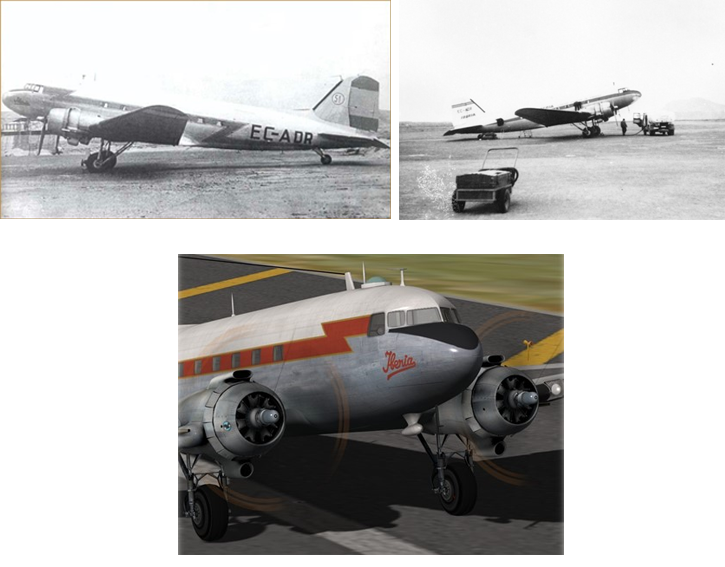
During it’s time with Iberia, 10100 was designated fleet number 51, a serial it carried prominently on its rudder.
Spanish Air Force
10100 found itself with a new owner on the 16th December 1965. After a break of nearly 20 years, it was back in military service, this time with the Spanish Air Force. Designated a type “T3”, it was now serial numbered T3-61. Serving with 745 Squadron, it bore the fuselage codes 745-61 & 901-12. The following two photos were taken at Salamanca in July 1967:
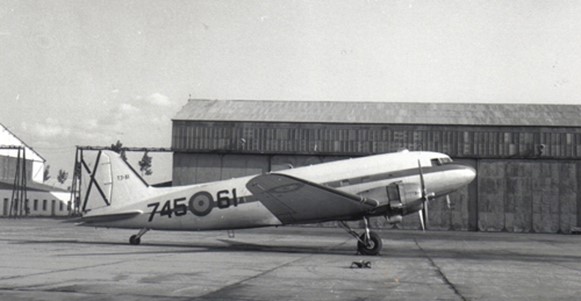
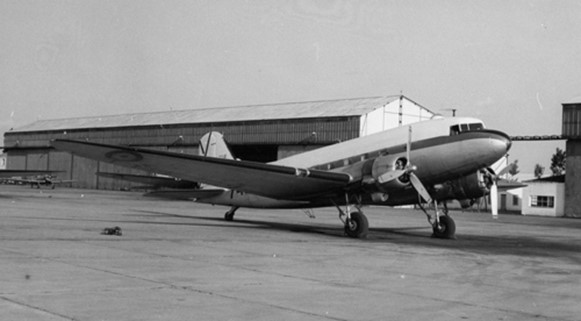
Its service lasted until the 10th May 1977, when it was placed in storage with the rest of the Spanish Air Force T3 fleet at Cuatro Vientos on the outskirts of Madrid.
It would remain there for the next 2 years.
On Display
After 2 years at Cuatro Vientos, 10100 was placed in a public auction. Allegedly, if it was not sold, it would have been scrapped. The auction went ahead on 10th July 1979 & it was purchased by Gunter Kurfiss (along with another C-47, 14005) for his “Air Classik” exhibitions then appearing at a number of airport terraces across West Germany.
The aircraft was ferried to Germany & went on display at Dusseldorf Airport. At this time it still bore most of its Spanish Air Force markings, including its fleet number on the tail. These are just some of the images of its time at Dusseldorf.
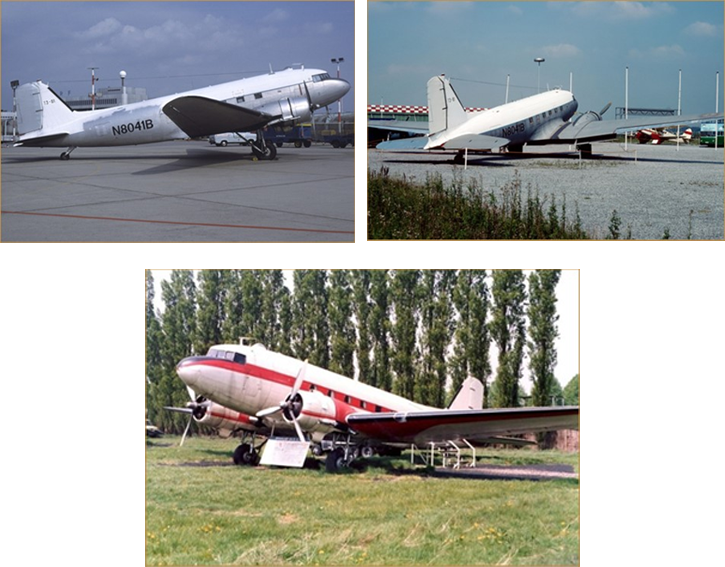
10100 remained at Dusseldorf until 1988, when it was moved to Marl, Germany & put on display again. This image shows it just after that move.
The aircraft subsequently moved again in 1993 to the Schwabisches Bauern und Technik Museum at Seiferthofen. As some stage thereafter, it acquired a fake registration number “N569R” & was reduced to just its fuselage.
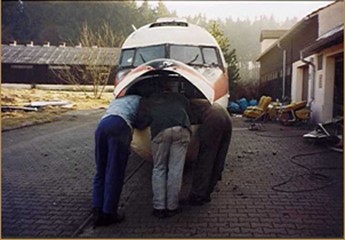
In September 1999, the fuselage was finally broken up by a company called Konfederate Klassiks & certain parts (including the cockpit) used as set pieces in an aviation themed cinema on the Feilitzschstrasse in Munich. The cinema was on the first floor, so the pieces had to be small enough to be manhandled through the building. These images show the dismantling process & the finished result.
The cinema did not last long, & by 2006 the cockpit offered for sale by the Sandy Air Corp in Innsbruck, Austria. It was duly purchased & moved back to the UK for restoration.
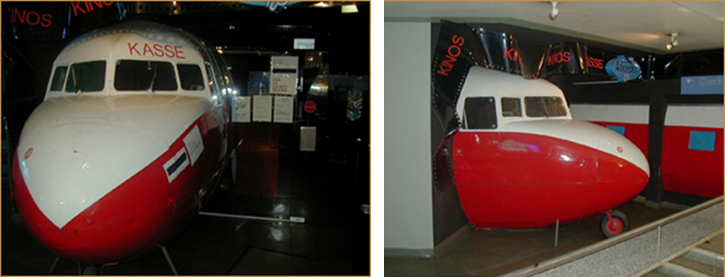
What followed was a 14-year labour of love where Rich Simms completely restored the cockpit to how she would have looked during WW2.
The attention to detail is amazing so when we heard that Rich who lives less than half an hours drive from Membury was contemplating selling the cockpit and knowing that 10100 had spent time at Membury, we had to buy her to become part of our collection at Membury.
The cockpit will be on display in the museum once complete and we also plan on taking it to airshows and events as well as utilising it for educational purposes.
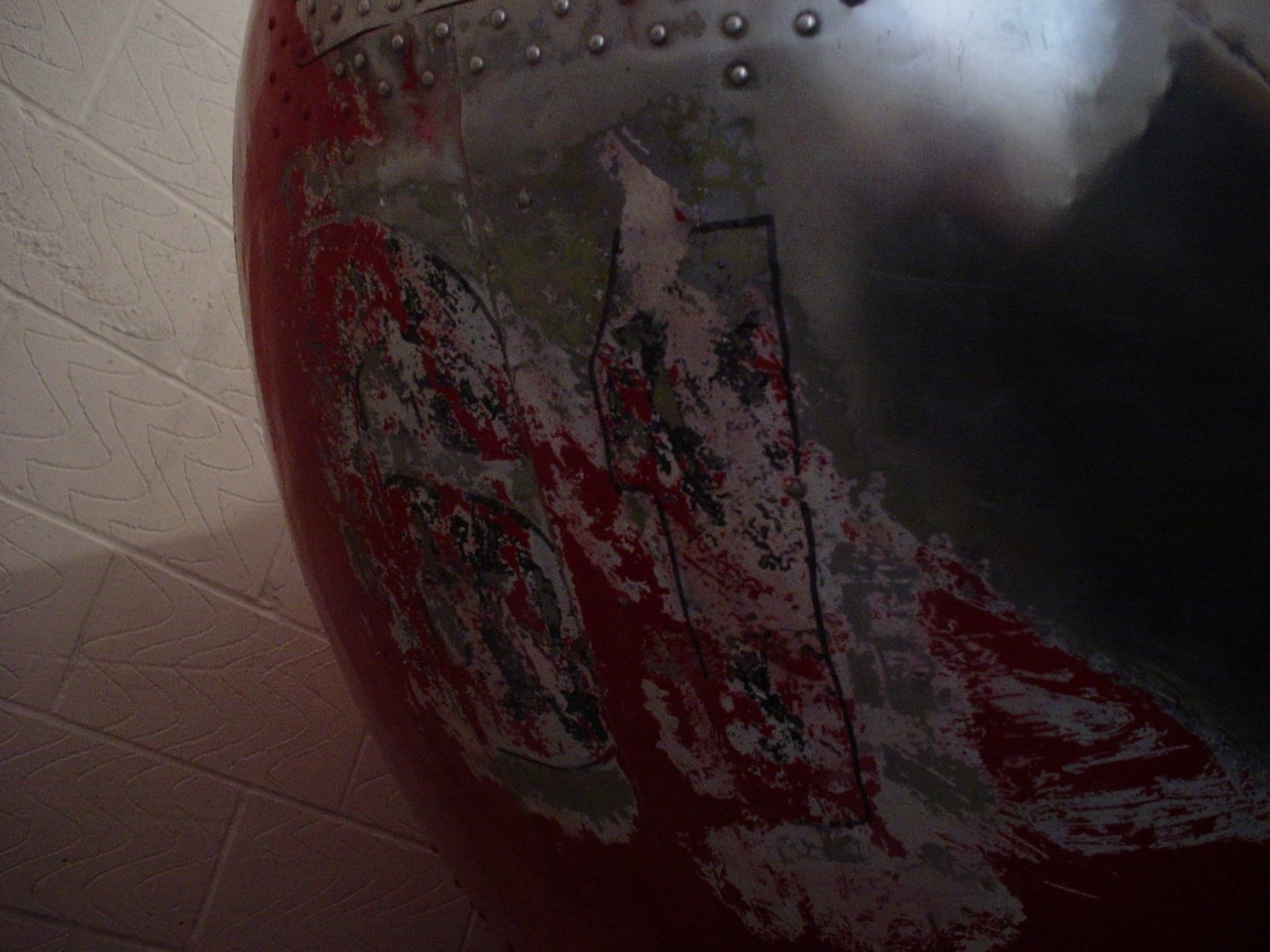
Spanish Air Force fleet number 61 – uncovered whilst paint was being removed (highlighted with marker pen for clarity)



